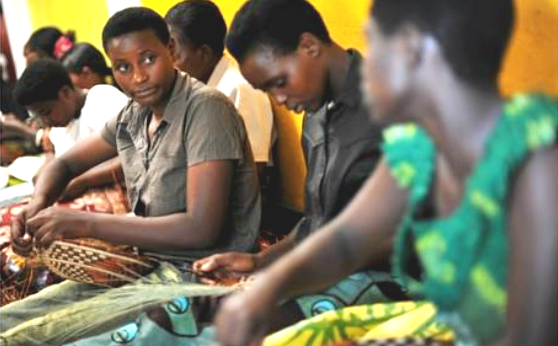
Rwandan women weaving baskets
For the past two years, the level of Rwandan females eligible for participation in the country’s labour force has significantly dropped by 12.5%.
According to a recent Labour Force Survey (LFS) 2016 pilot report, female labour force participation rate has drastically dropped to 41.5% compared to 54% in 2014.
The national labour force participation rate is the percentage of the working age population engaged in the labour force.
In the 2014 report on Labour force participation, females dominated the working-age population at a rate of 54%.The official minimum working age in Rwanda is at 16 years and above.
By then there were 10,515,973 people inhabiting the country of which 7,679,735 aged 16 and above were economically active. Of the working age people then; 4,147,056 were female representing 54%.
The Labour Force Survey 2016 pilot report estimates the rate of working age population engaged in the labour force at 49.3% indicating that slightly less than half of the working age population was either working for pay or profit or seeking employment.
This pilot survey found that by February this year there were 6,611,000 persons 16 years old and over. About 3,161,000 of them were in the labour force, either employed (2,831,000) or unemployed (430,000).
The male labour force participation rate was 58.1 %( 3,840,991), higher than the female rate of 41.5% (2,743,565).
According to Yusuf Murangwa Director General at National Institute of Statistics (NISR), “labour statistics are needed for the development and evaluation of policies and assessing progress towards descent work”.
The annual labour force survey collects data on employment and labour underutilization characteristics of the population on a continuous basis, providing quarterly estimates of the main labour force aggregates with sufficient precision at the district level.
Murangwa says this year’s survey program begun with a pilot survey conducted in February and results were published in June.
“A full survey will be conducted in August to derive annual estimates of the main labour force aggregates for this year,” He said.

